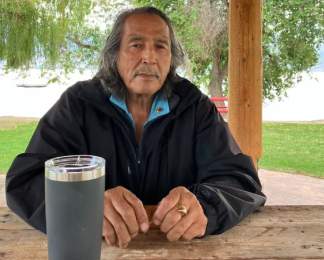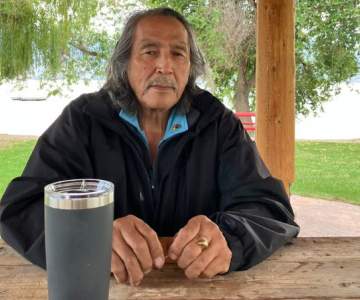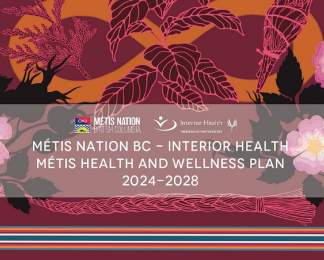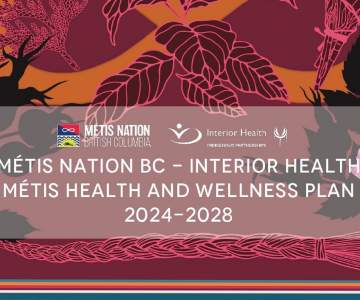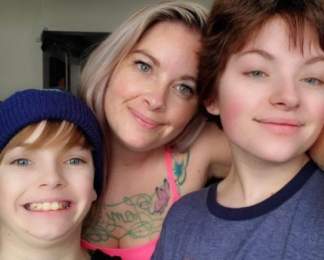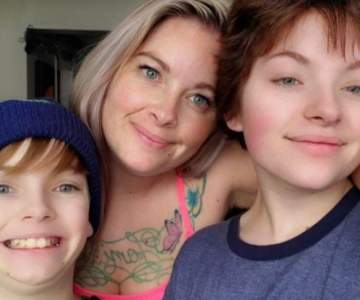Dear Community Leaders,
As we look towards summer 2024 with the potential of extreme heat and wildfires, Interior Health (IH) would like to share information and resources that can protect people living in the IH region. Extreme heat and wildfire smoke can cause serious health outcomes in people of all ages. Collaborative planning and action by communities helps to minimize negative health impacts.
Heat and health
Climate science projects that summer in the IH region will become hotter, with longer and more frequent heat events. Heat is the leading weather-related cause of death in Canada; even a few days of extreme heat can lead to severe illness and death. While everyone is impacted by extreme heat, certain groups are at higher risk including older adults, people with mental health conditions, and children.
During the 2021 heat dome in BC, 98% of deaths occurred indoors. Heat trapped indoors raises temperatures even after the sun goes down. Without air conditioners or adequate ventilation, indoor critical temperatures of over 31°C can make our homes dangerous, especially during consecutive days of heat. For people who are at higher risk of heat-related health impacts, the risk increases at indoor temperatures over 26°C.
Preparing for extreme heat
Preparation can save lives during extreme heat- BC Provincial Heat Alert and Response System (BC HARS): 2024 describes criteria that Environment and Climate Change Canada (ECCC) use to issue a Heat Warning or an Extreme Heat Emergency. Additionally, many municipalities are developing their own heat response plans. Preparing for extreme heat by developing systems and plans can save lives.
Actions community leaders can take:
- Develop a community preparedness and response plan for extreme heat
- Prepare community heat messages using trusted information from the British Columbia Centre for Disease Control (BCCDC) and/or Interior Health, and amplify heat warnings as appropriate
- Promote and encourage neighbourhood check-ins during heat events, especially for the elderly and those more socially isolated
- Extend the operating hours of indoor cooling spaces (e.g., libraries, community centres) and publicize their locations/hours through a variety of communication sources. For rural communities, consider using a local school, meeting hall or other gathering places (including shaded outdoor areas) as a temporary cooling space
- Extend operating hours and promote availability of outdoor public amenities like drinking water, spray parks, and shaded/covered areas
- Coordinate with local organizations to provide low-to-no cost access to indoor spaces (e.g., swimming pools, play centres)
- Consider establishing overnight cooling centres to support vulnerable populations
- Promote BC Hydro’s Energy Conservation Assistance Program to support vulnerable individuals; income qualified customers can apply to receive a portable air conditioner installed by a qualified professional
- Add all cooling centre/space locations to the Community Response Locations Portal; this is a centralized database that is shared publicly through Emergency Maps BC
Wildfire smoke and health
Wildfire smoke impacts everyone’s health. When exposed to wildfire smoke, people may experience health symptoms such as irritation of the nose and throat, cough, and shortness of breath. Those at higher risk for more severe health impacts include people with respiratory or heart conditions, seniors, pregnant women and their unborn babies, as well as infants and young children. Reducing both short and long-term exposure to wildfire smoke is key to lessen related health impacts. There is substantial concern that prolonged or recurrent exposure to high levels of wildfire smoke causes long-term health impacts like lung cancer or dementia. Research to evaluate this question continues.
Preparing for wildfire smoke and poor air quality
As summers get hotter, wildfire activity due to climate change is predicted to increase. While heat is often more localized, wildfire smoke can blow in from other provinces and other countries; poor air quality can persist for days and be unpredictable. Preparing for wildfire smoke and poor air quality by developing systems and plans can save lives.
Actions community leaders can take:
- Pay regular attention to local air quality advisories and subscribe to and publicly share Smoky Skies Bulletins
- Communicate messaging and actions for the public to take to reduce wildfire smoke exposure based on the Air Quality Health Index (AQHI); for communities that do not have AQHI data, this map displays hourly average of fine particulate matter (PM2.5) from provincial monitoring network, PurpleAir and AQ Egg sensors
- During wildfire events, air quality conditions may vary within hours. Stay up to date and download the AQHI Canada app and set up notifications for alerts in your community; encourage residents to download the app
- Coordinate cleaner air spaces that are publicly accessible (e.g. libraries, shopping malls, community centres, etc.) and publicize their locations/hours through a variety of communication sources
- Contact public space operators to encourage and support them in planning and improving their HVAC systems during the summer. The filters that can provide adequate protection from wildfire smoke are MERV 13 or higher and HEPA filtration
- Encourage employers in your community to follow WorkSafe BC guidance to protect workers from heat and smoke related health outcomes
- While there is currently no formal provincial guideline in place, consider re-scheduling or cancelling outdoor public events to reduce time spent outside when the AQHI is high (7+) or very high (10+)
- Promote ways for residents to create cleaner air spaces including:
- Upgrading HVAC or furnace filters and utilize portable air cleaners
- Improving home central heating and cooling system by choosing a filter with a minimum MERV 13 or as high a rating as your system can accommodate
- Portable air cleaners and filters can be claimed as a medical expense with a prescription by those with chronic respiratory or immune illnesses
- Encourage community members to create their own air cleaner for less than $100
- Support communities to hold BC Lung DIY Air Cleaner Workshops: a community-based initiative that teaches community members how to build simple devices that improve indoor air quality. Home-made box air fan filters are proven to clean air space
- Consider well fitted respirators where cleaner spaces may be difficult to access
- Upgrading HVAC or furnace filters and utilize portable air cleaners
- For communities without an air quality monitoring station nearby, consider contacting the Ministry of Environment and Climate Change Strategy. They will work with communities as their capacity allows to find the best solution for air monitoring needs including low-cost air sensors such as Purple Air.
Actions Interior Health will take:
- Support the development of community heat and wildfire smoke preparedness and response plans
- Share heat and wildfire smoke warnings and broadcast public health messages about the prevention of heat and smoke-related illness
- Provide public health messages to share through community heat and wildfire smoke response communications
- Develop and implement IH organizational heat and air quality response plans
- Monitor IH clients and patients who are vulnerable to heat and smoke-related illness
- Provide (where applicable) public health surveillance data from previous heat and smoke events to inform decision making
- Participate in regional briefing calls with local governments and First Nations to provide public health advice
- Support municipal staff in accessing resources to facilitate DIY Air Cleaner workshops
- Refer vulnerable IH clients to BC Hydro for free portable air conditioners
Funding opportunities for heat and smoke planning
- Local Government Climate Action Program (LGCAP) | BC Ministry of Environment and Climate Change Strategy | Eligibility includes initiatives that result in resilience to future climate conditions including preparing risk assessments
- Disaster Risk Reduction-Climate Adaptation | Union of BC Municipalities | Funding stream to reduce risks from disasters due to natural hazards and climate related risks including extreme temperature risk mapping, assessment, planning
- Community Climate Funding | gov.bc.ca | An all-in-one guide of funding opportunities for climate action projects in your community
Of special note
- If there is extreme heat during an air quality advisory, people should prioritize cooling down. Heat is typically more dangerous than short-term exposure to poor air quality
- While fans can help you feel more comfortable, they do not lower body temperature when outdoor and/or indoor temperatures are over 35°C. At that point, fans simply blow hot air over the skin and can cause increased body temperature. When outdoor air temperatures are cooler than indoor air temperatures, use fans in windows to blow cooler air from outside into a room
- Preparing for heat, and managing the health risks of extreme heat, must center on those who are socially isolated and living with lower socio-economic status
Interior Health is committed to working with community partners in all sectors to protect the health of the population. For more information on heat, wildfire and smoke health impacts and examples of community action, refer to IH’s 2023 Medical Health Officer Report on Climate Change, Health and Well-being.
The IH Healthy Communities Program and Office of the Medical Health Officers are available to support community planning related to heat and wildfire smoke. Your assigned Healthy Communities team member can be contacted at healthycommunities@interiorhealth.ca.
Sincerely,
(Signed)
Dr. Martin Lavoie
Interim Chief Medical Health Officer
Dr. Silvina Mema
Deputy Chief Medical Health Officer
Dr. Andy Delli Pizzi
Medical Health Officer
Dr. Jonathan Malo
Medical Health Officer
Dr. Sue Pollock
Medical Health Officer
Dr. Sanaz Vaseghi
Medical Health Officer


